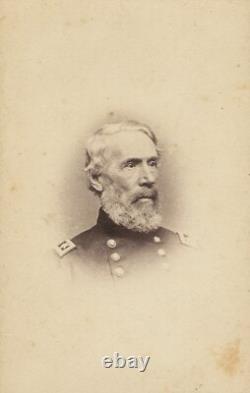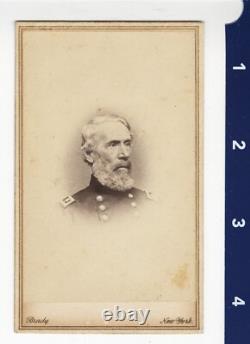
- Homepage
- Conflict
- Format
- Albumen (3)
- Ambrotype (32)
- Cabinet Card (66)
- Cdv (5)
- Crayon Portrait (2)
- Daguerreotype (27)
- Hardcover (14)
- Multi-formats (6)
- Negative Photo Image (4)
- Photograph (6)
- Ruby Ambrotype (3)
- Sixth Plate (2)
- Small (2)
- Stereoview (2)
- Tin Type (8)
- Tin Type Photo (2)
- Tintype (152)
- Tintype Photograph (6)
- Unknown (9)
- ... (6607)
- Photo Type
- Album (9)
- Albumen (14)
- Ambrotype (198)
- Cabinet Photo (67)
- Cdv (472)
- Cdv & Tintype (6)
- Cdvs & Tintypes (7)
- Daguerreotype (84)
- Gelatin Silver (13)
- Mixed (3)
- Negative (10)
- Negative Photo (4)
- Opalotype (4)
- Other (4)
- Photograph (4)
- Snapshot (3)
- Stereoview (23)
- Tintype (518)
- Tintypes (3)
- Unknown (12)
- ... (5500)
- Subject
- Children & Infants (21)
- Civil War (31)
- Civil War Soldier (12)
- Ethnic (17)
- Family (23)
- Fashion & Costumes (10)
- Figures & Portraits (149)
- Genealogy (10)
- Historic & Vintage (90)
- History (23)
- Men (58)
- Men, Civil War (54)
- Men, Military (39)
- Military (95)
- Military & Political (569)
- Military & War (14)
- Portrait (15)
- Portraits (14)
- Soldier (12)
- Women (19)
- ... (5683)
- Theme
- Americana (40)
- Americana, Fashion (18)
- Americana, Militaria (17)
- Antique (8)
- Art (7)
- Civil War (14)
- Conflicts & Wars (6)
- Fashion (19)
- History (43)
- History, Militaria (10)
- Love (6)
- Militaria (1017)
- Patriotic (7)
- People (21)
- Politics (14)
- Portrait (65)
- Portrait, Man (22)
- Stamps (22)
- Travel (6)
- Victorian (7)
- ... (5589)
- Type
- Belt Buckle (3)
- Carte De Visite (2)
- Cdv (3)
- Cdv Photograph (14)
- Daguerreotype (3)
- Full Cdv Photo Album (2)
- Illustrated Book (3)
- Negative Film Photo (4)
- Pendant (3)
- Photo Album (3)
- Photo Frame (2)
- Photograph (1327)
- Photograph Album (49)
- Picture Book (8)
- Picture Frames (8)
- Print (3)
- Real Photo (rppc) (10)
- Tintype (9)
- Tintype Photo (4)
- ... (5498)
C. 1860's General Edwin Vose Sumner Carte de Visite Photo by Matthew Brady





PHOTOGRAPHER : Matthew Brady (see bio below). SUBJECT : General Edwin Vose Sumner (see bio below). SIZE : Board measures 2.5" x 4", and mounted photo measures 2.25" x 3.5". Matthew Brady was born in 1822 in Warren County, New York. Little is known about his early life, but he moved to Saratoga Springs as a young man and later to New York City in the 1840s, where he studied photography and portrait making under the guidance of Samuel F. Morse, who had learned the daguerreotype process in France. Brady quickly established himself as a skilled photographer and opened his own studio in New York in 1844.
By 1849, he had expanded his operations to Washington, D. Where he became a prominent portraitist of political and cultural figures. Throughout the 1850s, Brady photographed many of the most famous Americans of his day, including writers, military leaders, scientists, and more than a dozen future U.
His goal was to preserve a photographic "Gallery of Illustrious Americans, " capturing the likenesses of prominent individuals for posterity. He gained national recognition for both the quality of his daguerreotypes and the ambition of his archival mission. When the Civil War began in 1861, Brady saw an opportunity to document the conflict in a way no war had ever been captured before. Despite the personal and financial risk, he organized and financed a team of photographers to cover the war on both Union and Confederate fronts.
Among the photographers working under Brady's name were Alexander Gardner, Timothy O'Sullivan, and George Barnard. They used bulky cameras, glass plate negatives, and horse-drawn darkrooms to capture haunting images of battlefields, encampments, fortifications, and the aftermath of combat. In 1862, Brady exhibited photographs from the Battle of Antietam in his New York gallery under the title The Dead of Antietam. The stark images shocked the public, many of whom had never before seen such realistic depictions of death and war. These photos helped change the way Americans perceived the Civil War and the nature of modern warfare itself.Though Brady's name became associated with the photographic record of the war, he did not always receive credit for the work of his operators, many of whom eventually left to establish their own studios. After the war, Brady hoped the U. As a result, he suffered financially and eventually declared bankruptcy. Brady continued to work in photography after the war, but his prominence declined in the face of changing technology and public tastes. In his later years, he lived in relative obscurity and financial hardship.
He died on January 15, 1896, in New York City, following an accident and a prolonged period of poor health. Matthew Brady is remembered today as one of the most important photographers in American history. His pioneering efforts in portrait photography and his ambitious documentation of the Civil War created an enduring visual record that continues to shape how the conflict is remembered. His work laid the foundation for photojournalism and demonstrated the power of photography to inform, influence, and move the public. Edwin Vose Sumner was born on January 30, 1797, in Boston, Massachusetts. He began his military career during the War of 1812 and was appointed as a second lieutenant in the U. Over the following decades, he built a solid reputation as a career officer, serving in various frontier posts, including in the Indian Territory and during the Black Hawk War. He also took part in the Mexican-American War, where he distinguished himself at the Battle of Cerro Gordo and earned a brevet promotion for gallantry. Sumner was known for his strict discipline and adherence to military order, which earned him both respect and criticism throughout his career. Before the Civil War, he continued his service in the cavalry and commanded several important posts in the western territories.In 1855, he was appointed colonel of the newly formed 1st U. He also served in Kansas during the turbulent Bleeding Kansas period and was involved in quelling violent clashes over slavery. With the outbreak of the Civil War in 1861, Sumner was promoted to brigadier general in the regular army and was quickly assigned to command troops in the Eastern Theater. He led a division during the Peninsula Campaign under General George B.
McClellan and later commanded the II Corps of the Army of the Potomac. He took part in major engagements including the Battle of Antietam, where his corps was heavily involved in the fighting at the Sunken Road, and the Battle of Fredericksburg, where he led attacks on the Confederate right. Sumner was one of the oldest generals in the field, already in his sixties during the war, but remained active and respected. In late 1862, he was reassigned to the Department of the Missouri and was preparing to take command of forces in that theater. However, before he could assume the post, he suffered a heart attack and died on March 21, 1863, in Syracuse, New York, at the age of 66. Edwin Vose Sumner's career spanned over four decades, making him one of the most experienced officers in the Union Army at the time of the Civil War. He was known for his loyalty, dedication to service, and for being a steadfast if conservative leader during some of the war's bloodiest battles.His legacy is tied closely to the early campaigns of the Army of the Potomac and the transitional period of American military development before and during the Civil War.

